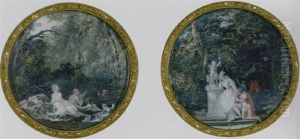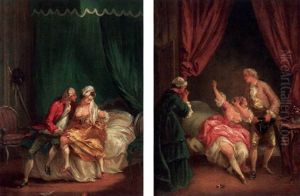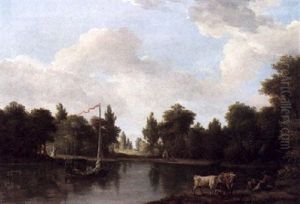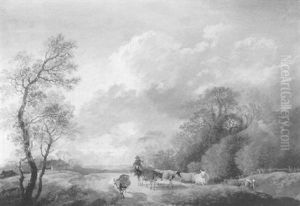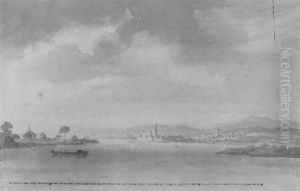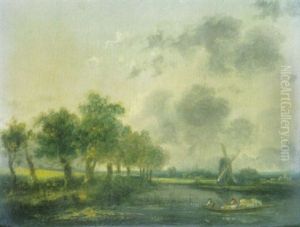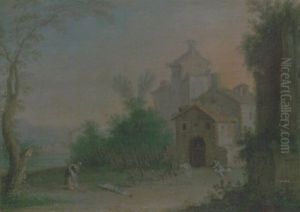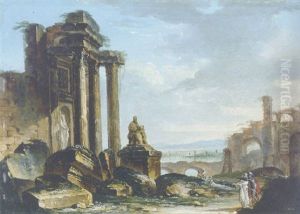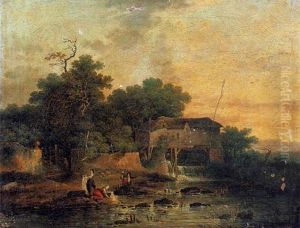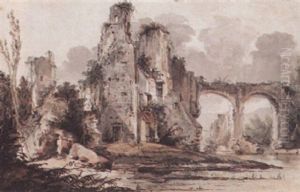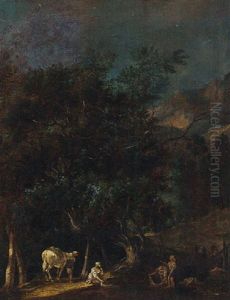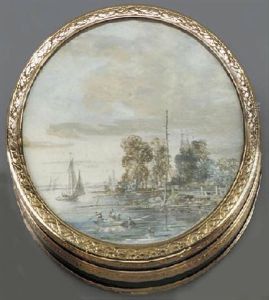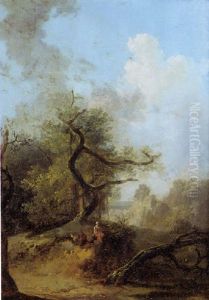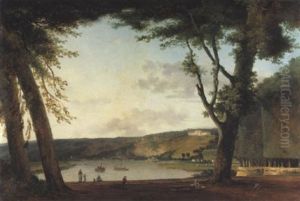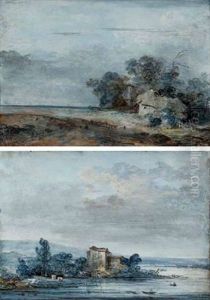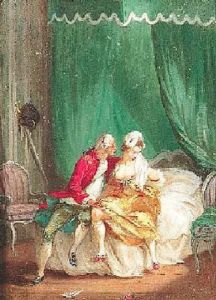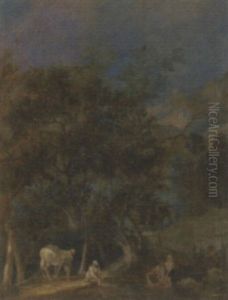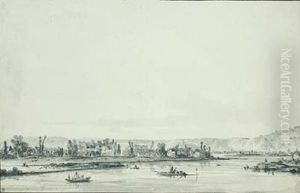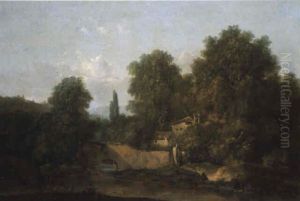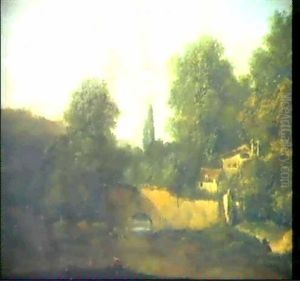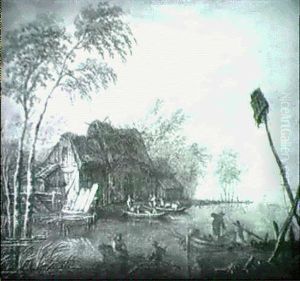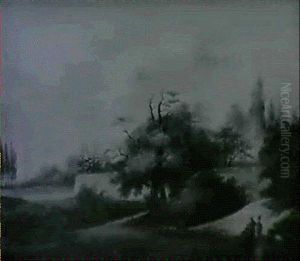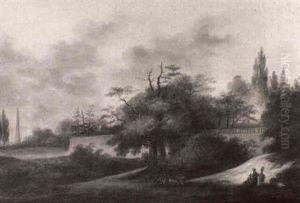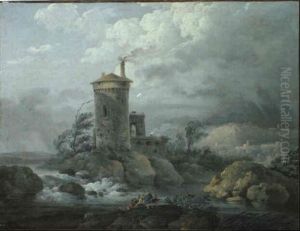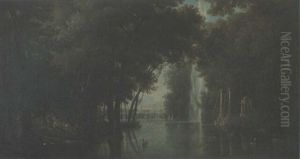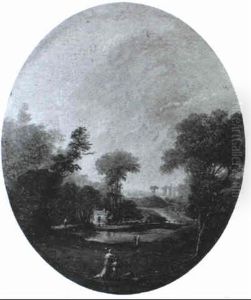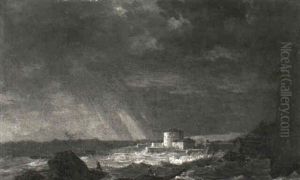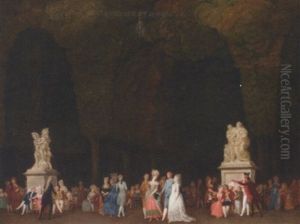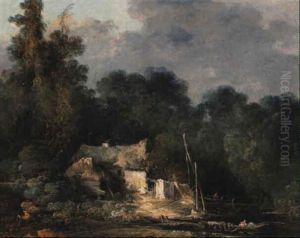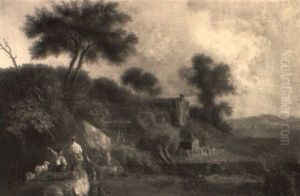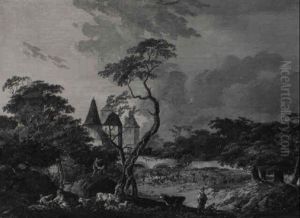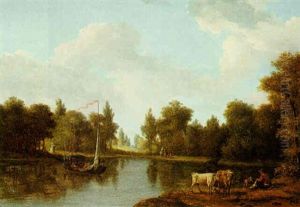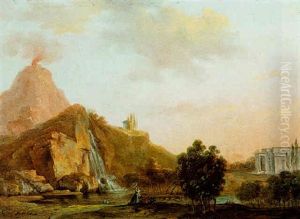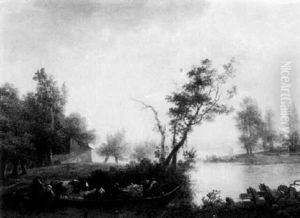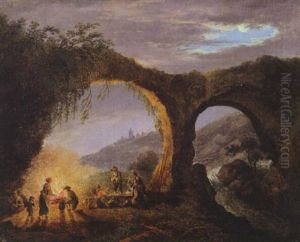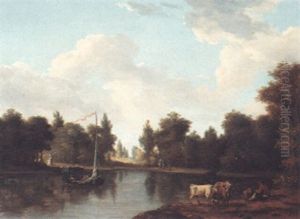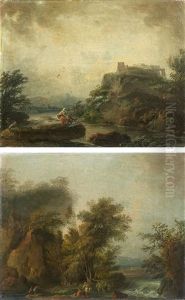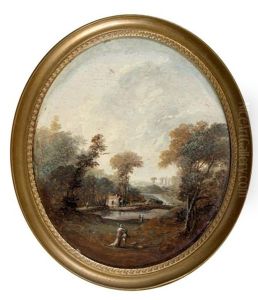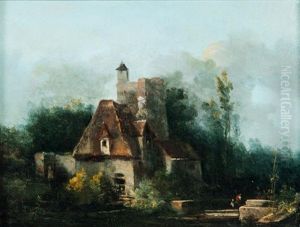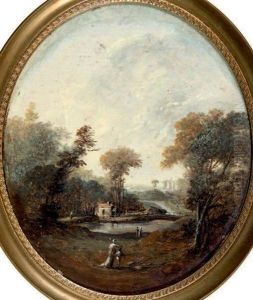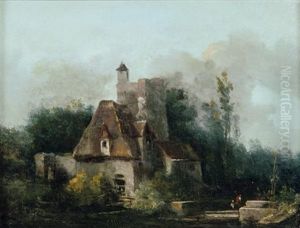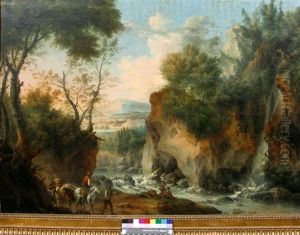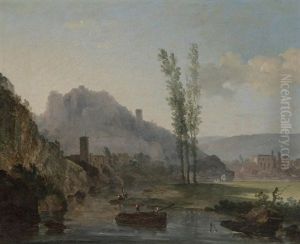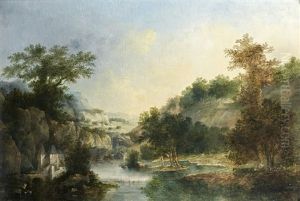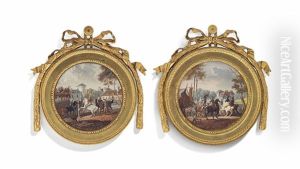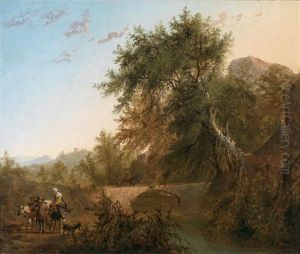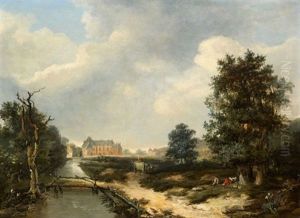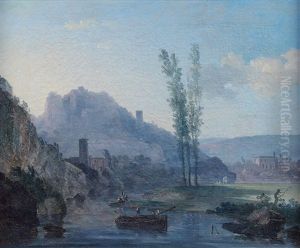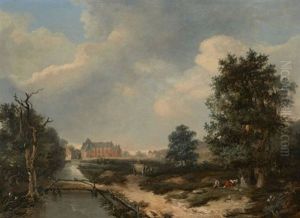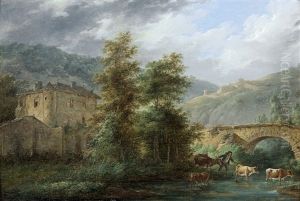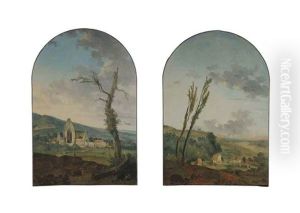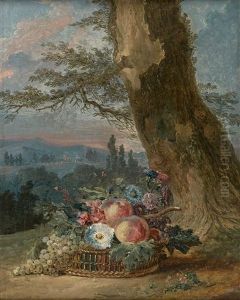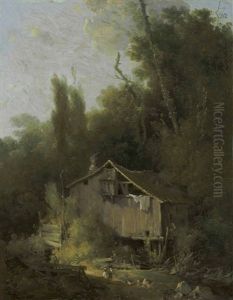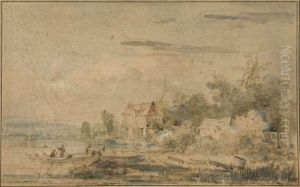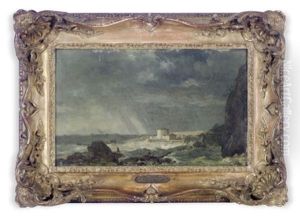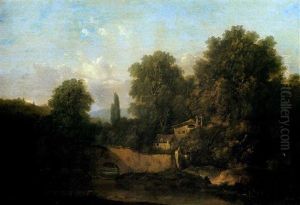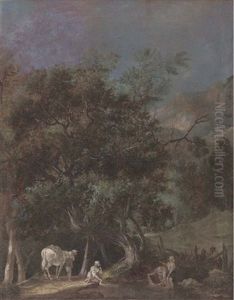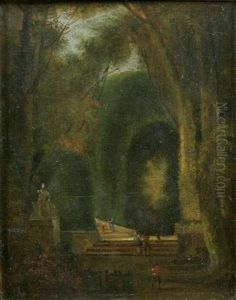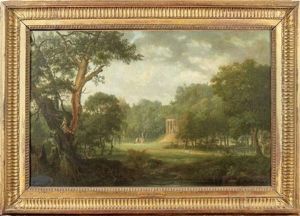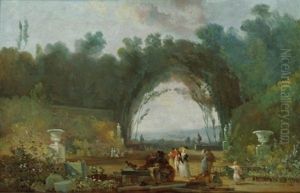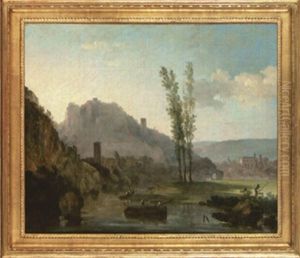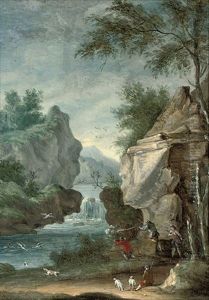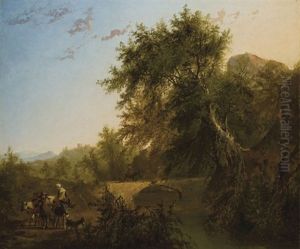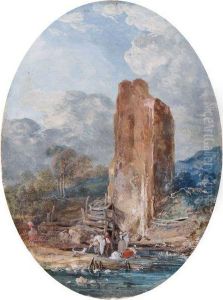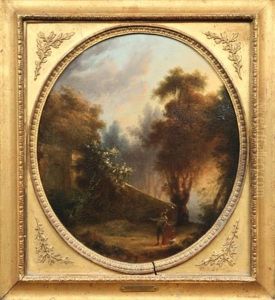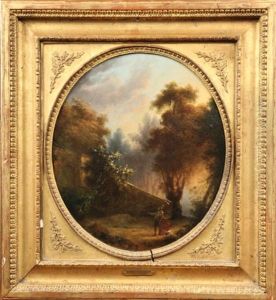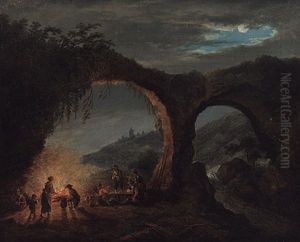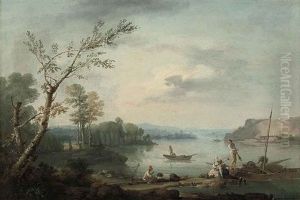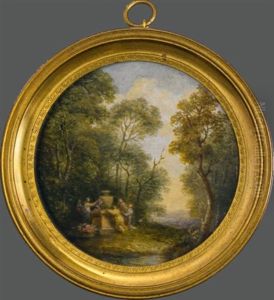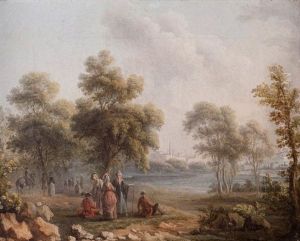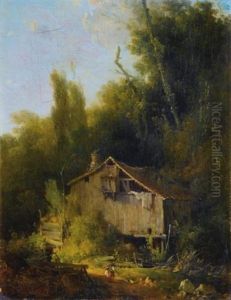Louis Gabriel Moreau Paintings
Louis Gabriel Moreau, also known as Moreau l'Aîné to distinguish him from other family members with similar names, was a French painter born on March 20, 1740, in Paris. He was the son of the painter Louis Moreau and was often associated with the depiction of landscapes and pastoral scenes that reflect the influence of the Rococo period and prefigure the Romantic era.
Moreau received his artistic training from his father and later from the landscape painter Jean-Philippe Le Bas. He became adept at capturing the French countryside's atmosphere and was particularly skilled in rendering the effects of light and weather conditions in his works. While not as widely known as some of his contemporaries, Moreau contributed to the evolution of landscape painting in France, developing a style that integrated detailed naturalistic observation with a sense of poetic sentiment.
Throughout his career, Moreau exhibited his works at the Paris Salon, the official art exhibition of the Académie des Beaux-Arts in Paris. His participation in the Salon helped to establish his reputation as a talented landscape artist. He also became a member of the Académie de Saint-Luc, a guild of artists and craftsmen that was an alternative to the more formal Académie Royale de Peinture et de Sculpture.
Louis Gabriel Moreau's paintings often feature idyllic scenes of the French countryside, with figures shown in harmony with nature. He captured the varying moods of the landscape, from serene and bucolic to dramatic and stormy. Moreau's work exhibits a fine attention to detail and a delicate use of color, which made his paintings popular with collectors and art lovers of his time.
He passed away on September 21, 1806, in Paris. Although Moreau's work was somewhat overshadowed by the dramatic upheavals in French art that occurred in the late 18th and early 19th centuries, his landscapes have continued to be appreciated for their quiet beauty and historical value. His works can be found in various museum collections, including the Louvre in Paris, and they offer a glimpse into the pastoral aesthetics of the French landscape tradition before the onset of the Romantic movement.
